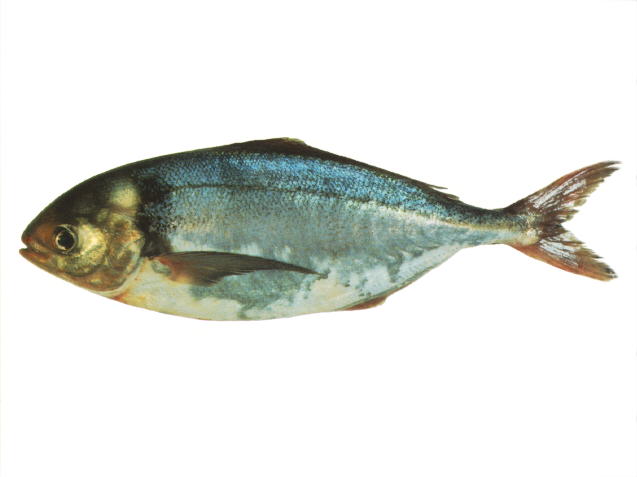| Centrolophidae (Medusafishes) |
| 76 cm TL (male/unsexed); max.weight: 4,000.0 g; max. reported age: 15 years |
|
benthopelagic; brackish; marine; depth range 22 - 400 m |
| Southwest Pacific: confined to Australian and New Zealand seas. |
|
|
| Adults inhabit continental shelf and slope waters (Ref. 6390). Reported from depths between 22 m (Ref. 58489) and 400m (Ref. 30458). They are schooling species, usually aggregating close to the sea bed (Ref. 26498) although there is some evidence that they move into the middle water column at night (Ref. 30459). Juveniles recorded offshore to a depth of 100 m and sometimes entering estuaries, often in association with jellyfish (Ref. 9563) and schooling close to the surface. Feed mainly on salps but also takes euphausiids, krill, crabs and small squid (Ref. 9072). Marketed fresh and frozen; eaten steamed, fried, broiled, boiled, microwaved and baked (Ref. 9988). |
|
Not Evaluated (N.E.) Ref. (130435)
|
| harmless |
|
Occurs from South Australia to New South Wales and Tasmania (Ref. 9563). Blue warehou have been caught as far west as 131°E in the Great Australian Bight (Ref. 6390).
Commercial fishery: The warehou fishery has developed only since the late 1970s. Increases in the number of trawlers fishing southern New South Wales and eastern Victoria and greater market acceptance of warehous saw annual landings reach about 1800 t by 1986 (Ref. 30460).
Prior to 1987, most of the warehous catch was taken by trawlers using demersal otter trawl nets. Since then landings have increased greatly due to the targeting of blue warehou by fishers using bottom set gillnets in the Southern Shark Fishery. Most of the blue warehou catch from this fishery comes from grounds off eastern Victoria and is landed at Lakes Entrance (Ref. 30461). Blue warehou and spotted warehou also form a bycatch of gillnet fishing for school sharks (Galeorhinus galeus) and gummy sharks (Mustelus antarcticus) in the Southern Shark Fishery. The amount of warehou landed by gillnet fishers operating in Victorian waters has increased from 80 t in 1984 to over 1700 t in 1990.
Both warehou species are also caught in Tasmanian waters by coastal set gillnets. Tasmanian fishers target schooling warehou by setting the gillnets on reefs in depths up to 20 m. There is also potential for the use of mid-water trawl nets to target schooling warehou (Ref. 30459).
The main trawling grounds for warehou are off southern New South Wales, eastern and western Victoria, and north-western Tasmania where significant catches of spotted warehou are taken (Ref. 30458, 30460). Most of the blue warehou trawl catch is taken from depths of 50 m to 250 m in the trawl fishery and from 60 m to 75 m in the gillnet fishery, although the highest catch rates from gillnets have been recorded in 150-175 m (Ref. 30461). Trawl catches of warehous show a distinct seasonal trend with late winter and early spring producing the largest catches of both species (Ref. 30461). Gillnet catches of blue warehou exhibit less seasonal variation but catches do tend to be higher in late summer and autumn (Ref. 30461).
Most of the warehou catch is sold on the domestic fresh fish market, mainly through the Melbourne Wholesale Fish Market. The 2 species are often marketed together but when they are marketed separately, blue warehous tend to gain higher prices.
Recreational fishery: Anglers catch juveniles of both warehou species in large bays and estuaries, with blue warehou more common in recreational catches than are spotted warehou. Warehous are normally caught by anglers during the colder months of the year, on baits of prawn (Penaeidae), rock lobster (Jasus species) or fish flesh (Ref. 27128). Recreational fishers in Tasmania use coastal set gillnets to catch warehou.
Resource status: There is insufficient information to determine the status for blue warehou in Australian waters. No reliable biomass estimates are available for this species: hence, further research is needed to better estimate biomass by allowing for seasonal changes in local abundance (Ref. 30460). The lack of sound biomass estimates means that it is not possible to determine whether current catch levels are sustainable for blue warehou. |
Source and more info: www.fishbase.org. For personal, classroom, and other internal use only. Not for publication.

